

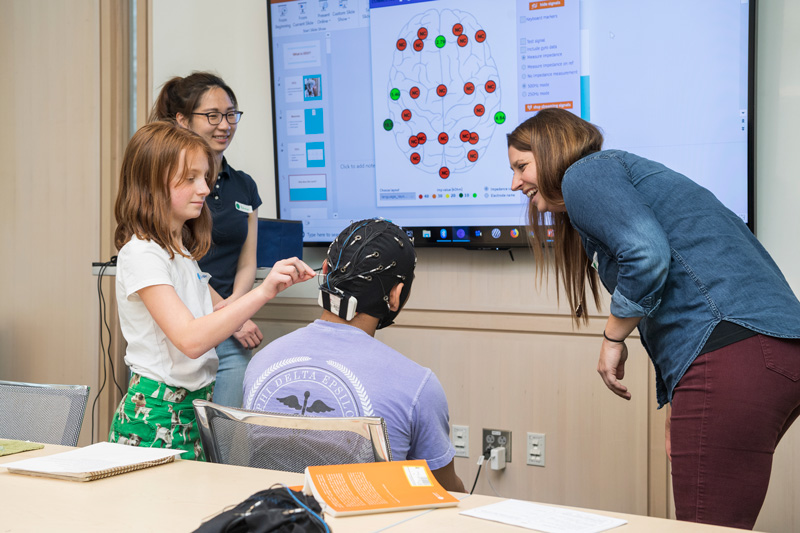
Brain mapping
Photos by Kathy Atkinson May 10, 2019
Local fifth-graders learn about brain research at UD
When does the brain stop growing? Does a magnetic resonance imaging machine emit radiation? What inspired you to study the brain?
These were just a few of the questions that inquisitive fifth-graders from the Independence School had for University of Delaware postdoctoral researcher Julie Schneider during a recent tour of UD’s Center for Biomedical and Brain Imaging (CBBI).
CBBI is a state-of-the-art research facility that houses the first magnetic resonance imaging (MRI) scanners dedicated to research in the state of Delaware. Like human MRI machines found in hospitals, these instruments use strong magnetic fields and radio waves to form images of the brain and other parts of the body. Other capabilities in the facility enable research on psychopathology, cancer, stroke, cerebral palsy, osteoporosis and other diseases and disorders.
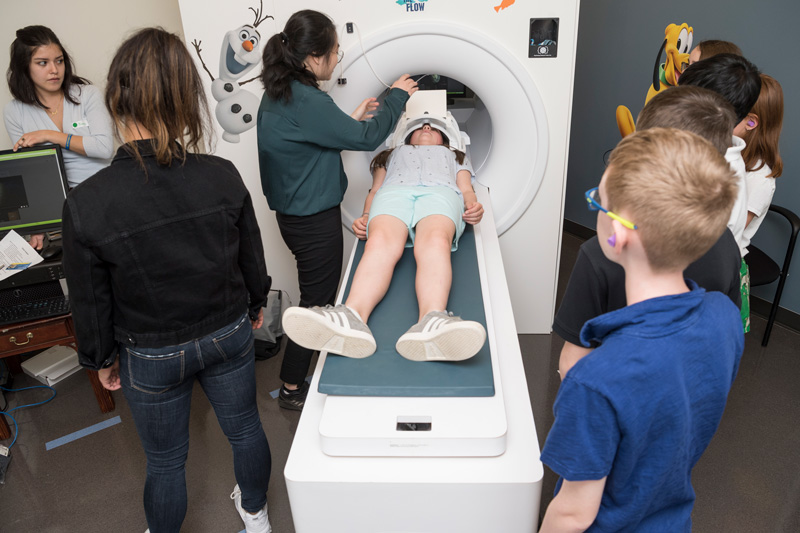
The visit to CBBI and other laboratories on UD’s Newark campus was part of a middle school STEM event designed to help the young students gain a deeper understanding of the brain and the tools researchers use to study it.
Schneider, who hosted the visitors alongside graduate students associated with the Department of Linguistics and Cognitive Science, called the event an opportunity “to share her journey and her love of neuroscience” with potential future researchers, maybe even fellow Blue Hens.
“I was inspired to study the brain after my father, who is bilingual, had a stroke and lost the ability to speak. With treatment and therapy, he was able to regain this capability,” Schneider told the fifth-graders. “I wanted to understand how the brain could adapt — and recover — from different things in his life like that. That’s why I decided to become a neuroscientist and do research.”
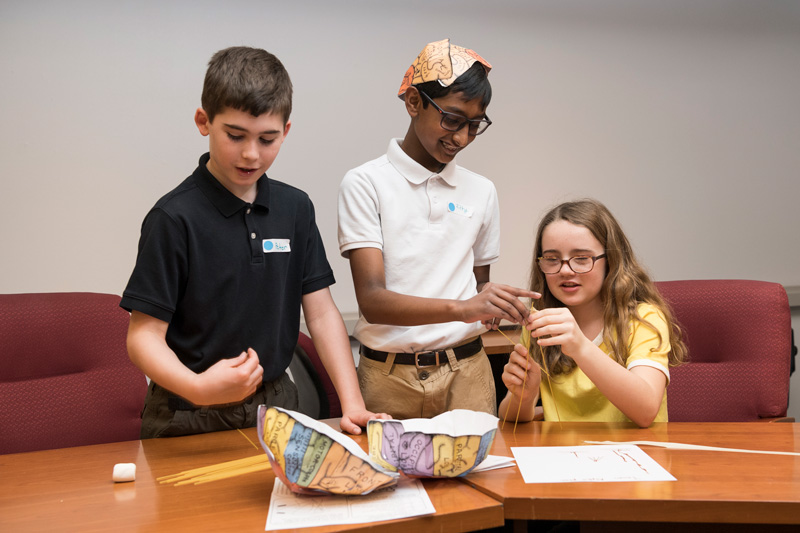
During the tour, the students learned ways UD researchers are using light and fNIRs (near infrared spectroscopy) to “peek inside the brain” and better understand what is happening. They heard about the scientific method and made paper "brain hats," too.
The fifth graders also had a chance to go inside a mock MRI simulator and hear the noises that a real MRI machine produces as it works. Down the hall, UD graduate students taught them about functional MRI, a technique that allows researchers to visualize which structures and neural networks in the brain “light up” during different activities, such as watching a video, listening to music or looking at pictures, by measuring the blood flow to active areas of the brain.
“MRI can help us map connections and learn how different regions of the brain communicate with each other,” said Jennifer Legault, also a postdoctoral researcher at UD.
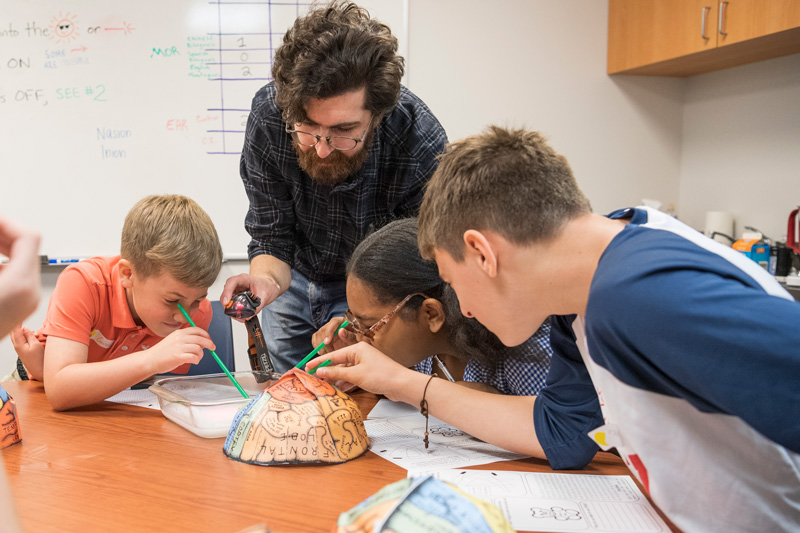
Hands-on team activities like planning and building a tower using dry spaghetti, a large marshmallow and tape, helped the students understand that research isn’t just one person working in a lab. It takes many people working together, failing and starting over again in order to learn, grow and further research on a particular problem.
During a discussion, one fifth grader asked, “How does the brain control the whole body at once?” It’s a big question. Schneider explained that the brain sends electrical currents throughout our bodies using neurons, tiny messengers that quickly ferry information back and forth. Researchers can measure this electrical activity in the brain using a technique known as electroencephalography, or EEG.
She described how researchers can “clean up the EEG data” with fancy math algorithms to remove results that come from natural things like blinking our eyes or breathing. Some students in the room groaned and said things like “I can’t do math.”
“I thought the field trip was really fun and interesting. Our visit to the lab makes me think about becoming a neuroscientist when I grow up.”
Fifth grader at the Independence School
“Sure, you can,” said Schneider, “We need mathematicians — and engineers — to help us with these complicated research questions, like understanding how people learn new things or how brain signals change with age or developmental disorders like autism.”
Understanding how the brain works is difficult, even for adults. Sometimes seeing is believing and one memorable experience can inspire a career path.
“I thought the field trip was really fun and interesting. Our visit to the lab makes me think about becoming a neuroscientist when I grow up,” fifth grader Brinton Harra said.
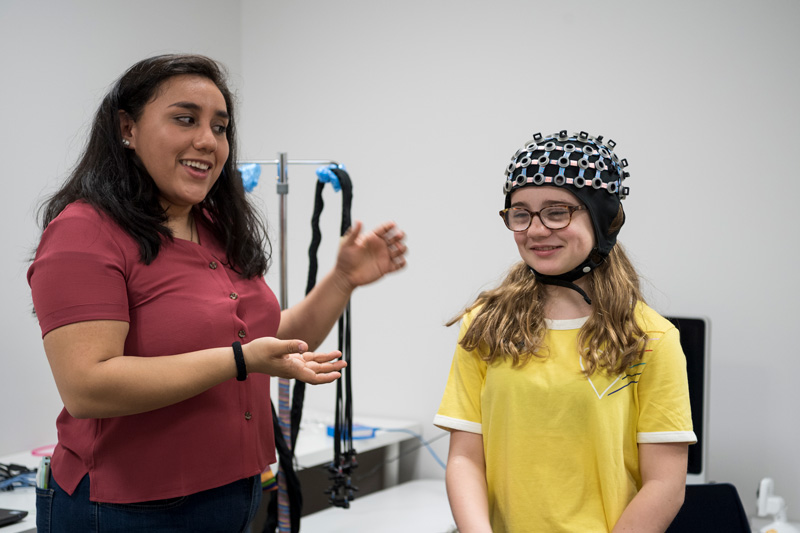
Contact Us
Have a UDaily story idea?
Contact us at ocm@udel.edu
Members of the press
Contact us at 302-831-NEWS or visit the Media Relations website

